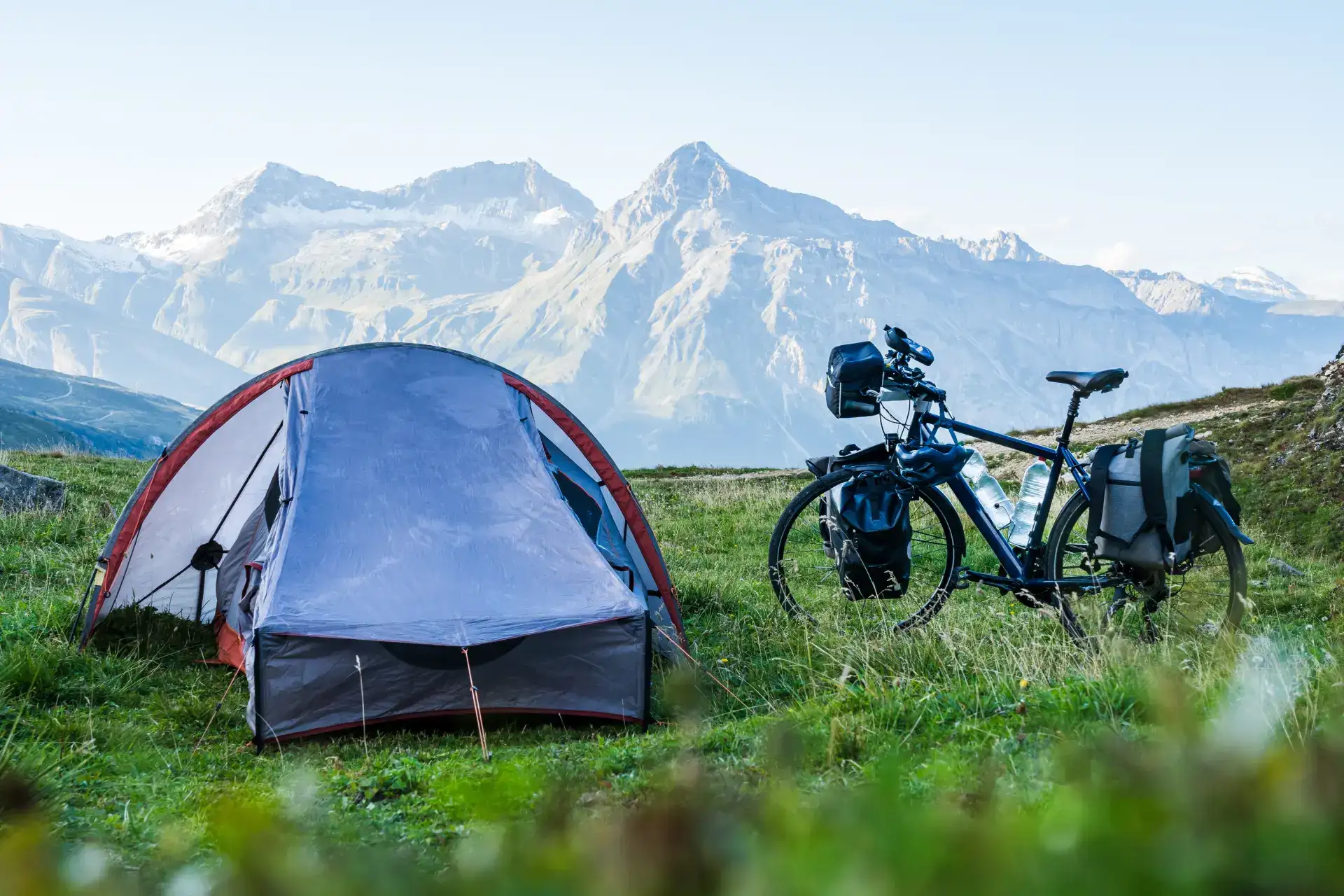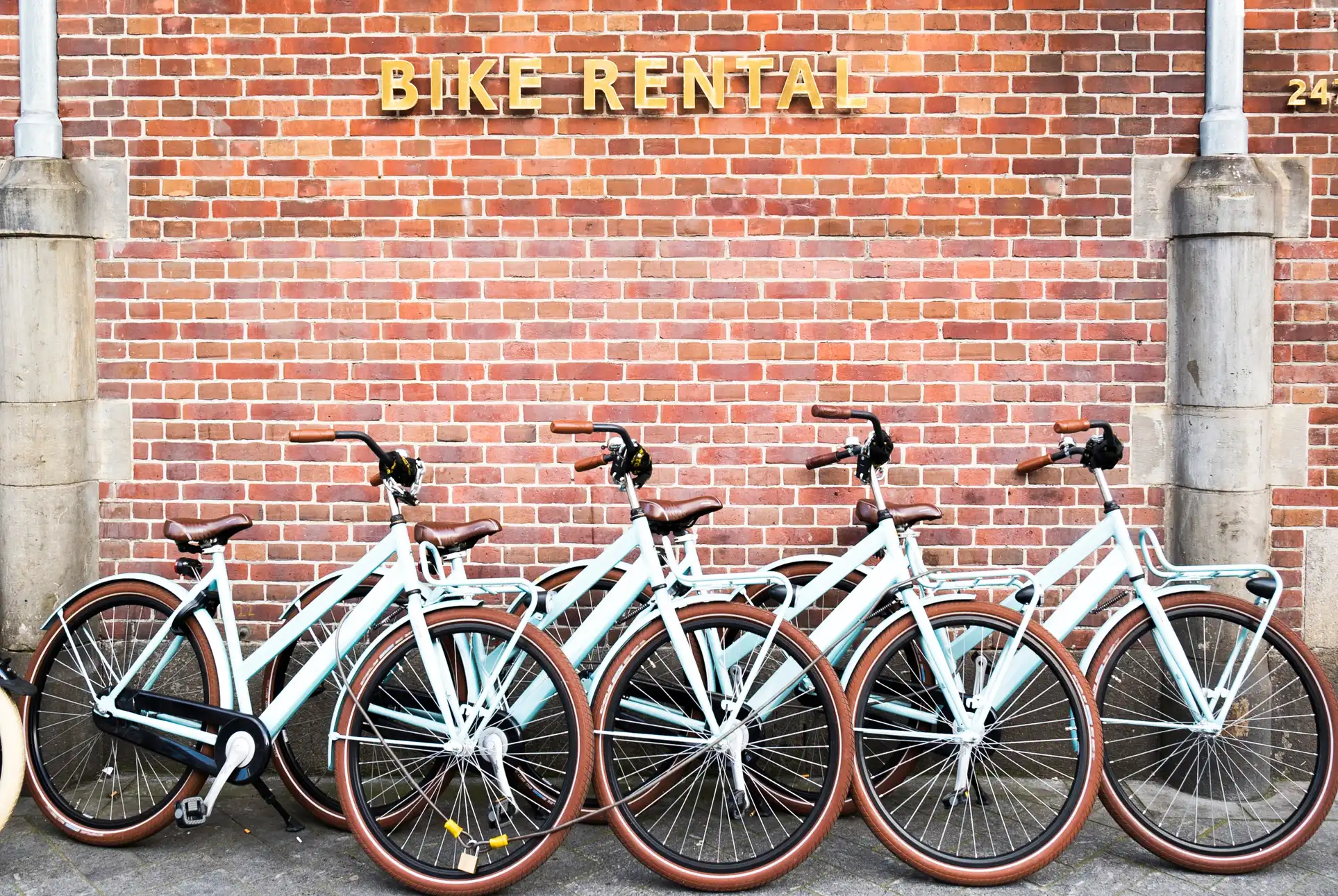Offering product bundles can be a game-changer for equipment rental businesses. When done right, bundles can increase customer satisfaction, boost sales, and streamline operations. They provide customers with convenience and perceived value, making their rental experience more enjoyable and hassle-free.
However, creating bundles that resonate with your customers is both an art and a science. It involves understanding their needs, carefully selecting and pricing items, and continually refining your offerings based on feedback and market trends. Thoughtfully crafting equipment packages enhances your service and distinguishes your business from competitors.
What is the power of product bundles?
Product bundles in equipment rental are carefully curated collections of items that complement each other. Bundles are designed to provide a complete solution for a specific need or project. For example, a “Weekend Camper’s Kit” might include a tent, sleeping bags, a portable stove, and a cooler. Here are some of the benefits of bundling products:
- Convenience for customers: Bundles save time and reduce decision fatigue.
- Perceived value: Customers often feel they’re getting more for their money.
- Increased average order value: Bundles can encourage customers to rent more items than initially planned.
- Operational efficiency: Preparing and managing bundles can streamline your processes.
- Competitive advantage: Unique bundles can differentiate your business from competitors.
Start your rental business for just $29/month
Put your toes in the water and test the demand in your area with a rental website for just $29/month.
How to create the perfect equipment rental bundle
Creating the ideal equipment package requires a strategic approach. It’s not just about throwing together a few related items; it involves understanding your customers, selecting the right mix of products, pricing them attractively, and continually refining your offerings based on feedback and market trends. Let’s explore the critical steps to crafting bundles that resonate with your customers and add significant value to your business.
1. Know your customer
The key to successful bundling is understanding your customers’ needs and preferences. Consider:
- What projects or activities are they typically undertaking?
- What pain points can you address with your bundles?
- What skill level are they at? (Beginners might appreciate more comprehensive bundles)
- Are there seasonal trends or local events that influence equipment needs?
2. Balance essentials and add-ons
A good bundle should include:
- Core items that are essential for the task
- Complementary items that enhance the experience
- Perhaps one or two “surprise” items that add extra value
3. Offer flexibility
While bundles are incredible, only some customers want everything in a package. Consider offering:
- Tiered bundles (basic, standard, premium)
- Customizable bundles where customers can swap out certain items
- The option to add or remove individual items from a bundle
- “Build-your-own” bundle options for more experienced customers
4. Price it right
The bundle should offer better value than renting items separately but still be profitable for you. Consider these pricing strategies:
- Discount the bundle by 10-15% compared to the cost of individual rentals
- Offer a more significant discount on longer rental periods to encourage extended use
- Use dynamic pricing based on demand and seasonality
- Consider loyalty programs or repeat customer discounts for bundle rentals
5. Test and refine
Launch your bundles as a pilot program. To ensure success:
- Gather feedback from customers through surveys or follow-up calls
- Analyze which bundles are popular and why
- Monitor your inventory revenue and adjust bundle compositions accordingly
- Be prepared to adjust based on this data and market trends
- Consider A/B testing different bundle configurations or pricing strategies
Real-world examples
To illustrate the versatility and effectiveness of product bundling, let’s look at some real-world examples from various industries. These examples show how carefully curated bundles can cater to specific customer needs, enhance the rental experience, and differentiate your offerings in a competitive market.
Campers & Kit
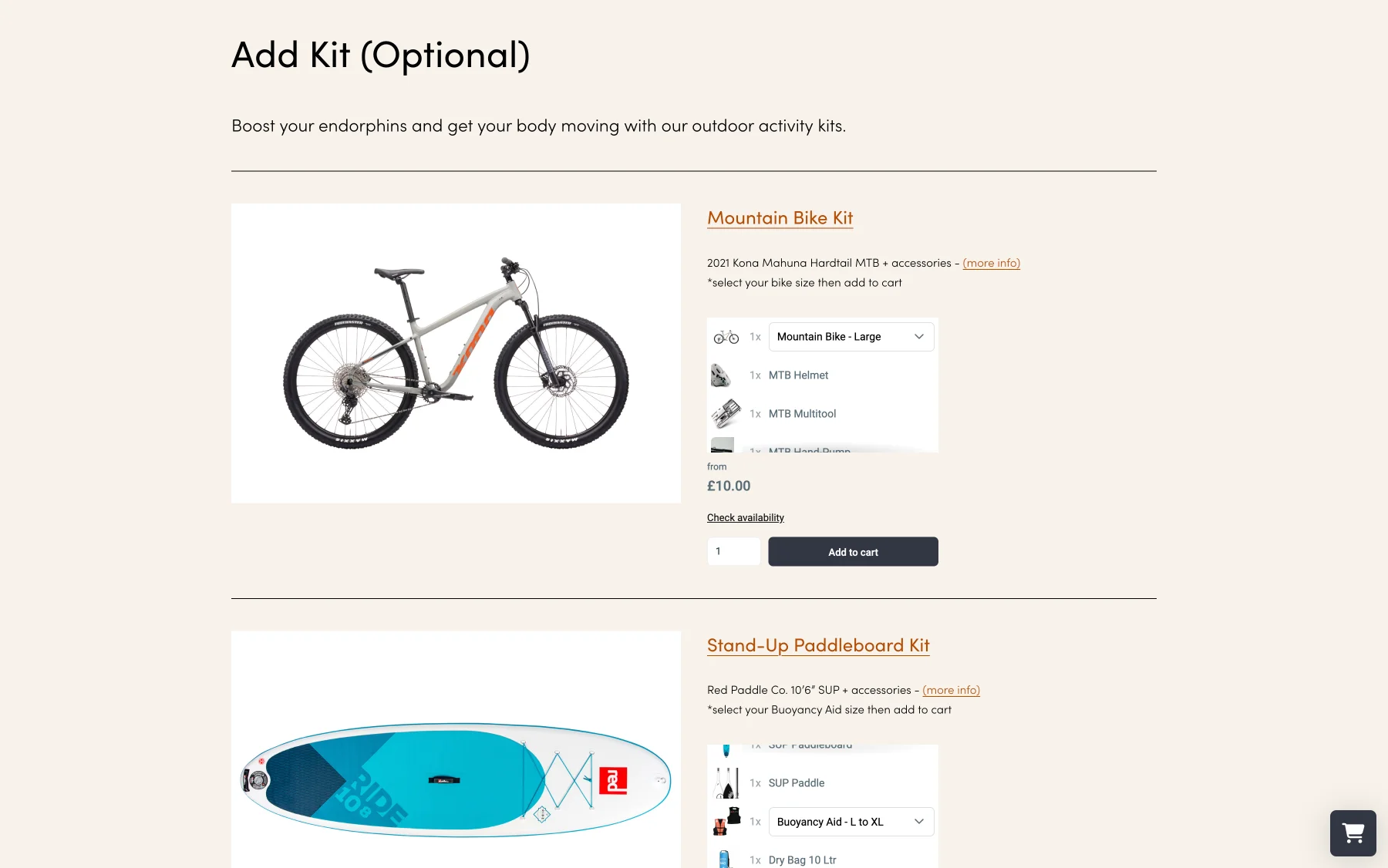
Campers & Kit offers several sports activity kits alongside their luxury campervan rentals. These allow customers to plan additional activities while booking their campervan. For example, the “Mountain Bike Kit,” includes a 2021 Kona Mahuna Hardtail MTB, helmet, multitool, hand pump, and inner tube. This provides everything they may need to explore by bike.
Sharegear
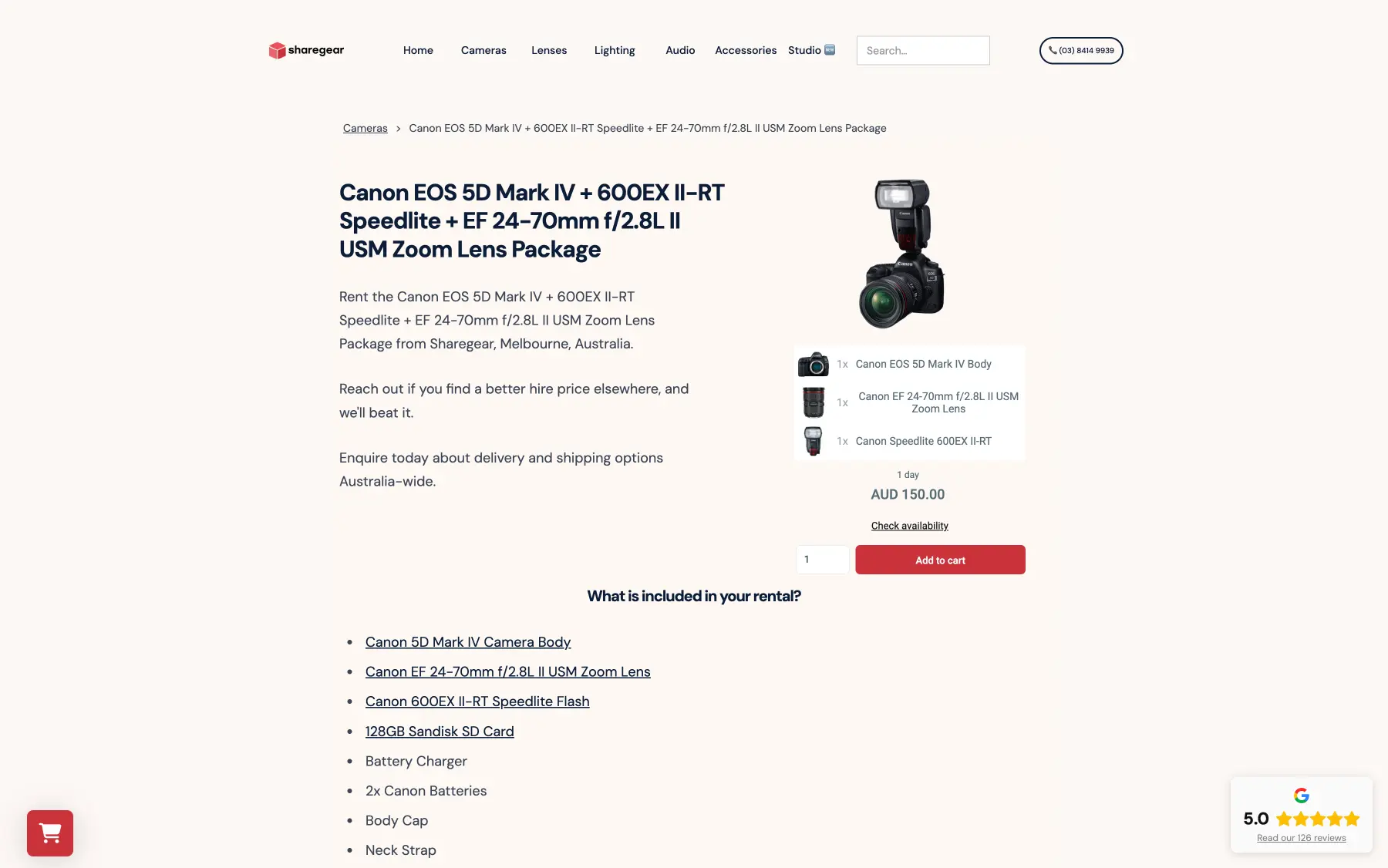
Alongside standalone camera and accessories rental, Sharegear offers packages for some of its most popular cameras. For example, the Canon EOS 5D Mark IV comes with an EF 24-70mm f/2.8L II USM zoom lens, 600EX II-RT Speedlite flash, 128GB SD Card, battery charger, spare battery, and neck strap. Thanks to its completeness, customers who rent it are fully prepared for a day of photography.
Luxe Event Hire
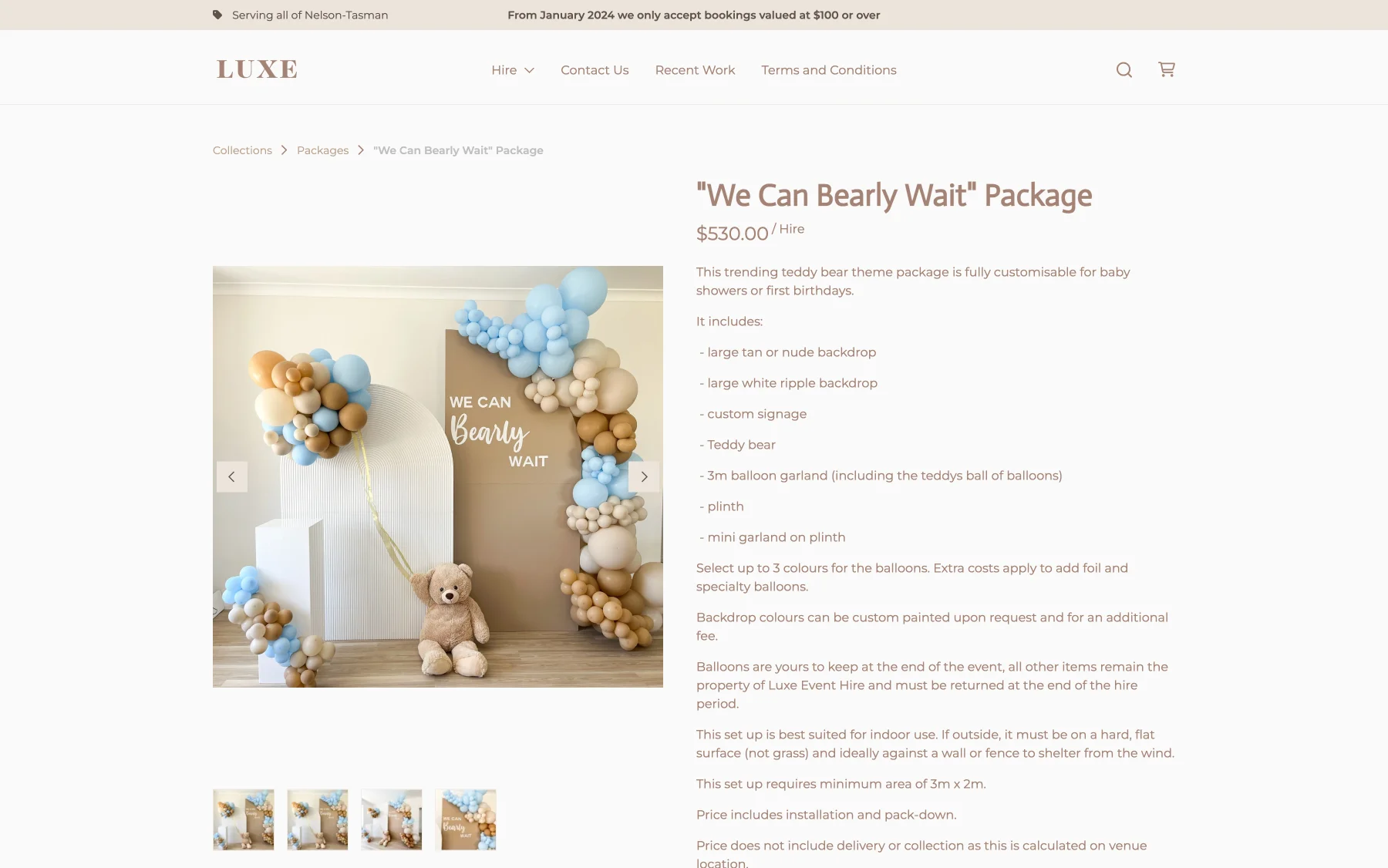
Luxe Event Hire offers packages based on different themes and everything a customer needs. For example, the “We Can Bearly Wait” package is designed around a teddy bear-themed baby shower. It includes large tan and white backdrops, custom signage, a teddy bear, a balloon garland, and a plinth. This makes the perfect inside setup for an expectant mother.
Start with building your rental website
Every new rental business starts with a website to get their first bookings.
When to avoid bundling rental products
While bundling can be a powerful strategy, it’s essential to recognize that it’s not always the best approach. Evaluating your market, customer preferences, and operational capabilities is crucial to determine when bundling might not be optimal. Here are some critical instances when you should consider avoiding equipment packages.
- It significantly increases complexity for your staff or customers
- The bundle doesn’t offer a clear value proposition
- You’re dealing with very high-end or specialized equipment that professionals prefer to select individually
- The cost of the bundle becomes prohibitive for your target market
- Inventory management becomes too challenging due to varied bundle configurations
Creating compelling product bundles in the equipment rental industry is both an art and a science. It requires a deep understanding of your customers, careful curation of items, and a willingness to adapt based on feedback. When done well, bundles can set your business apart, providing unmatched value and convenience to your customers while boosting your bottom line.
Most important takeaways
Understand your customers: Knowing your customers' needs, preferences, and pain points is essential for creating effective product bundles.
Balance essentials and add-ons: A well-crafted bundle should include core items, complementary items, and surprise elements to enhance the customer experience.
Offer flexibility: Providing tiered or customizable bundles allows customers to tailor their rentals, increasing satisfaction and perceived value.
Price strategically: Bundles should offer better value than individual rentals but still be profitable. Consider discounts, dynamic pricing, and loyalty incentives.
Continuously refine your bundles: Regularly gather feedback, analyze performance, and adjust your bundles to meet changing customer needs and market trends.
